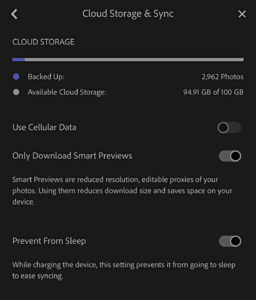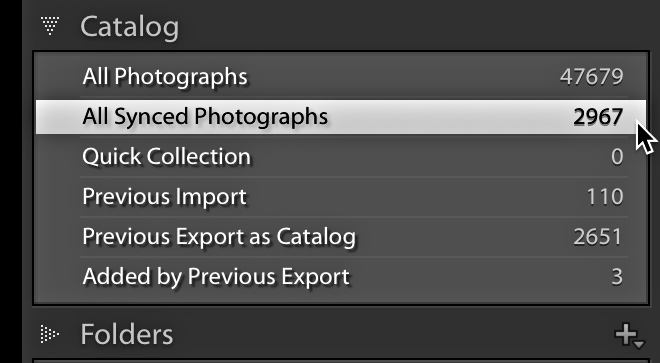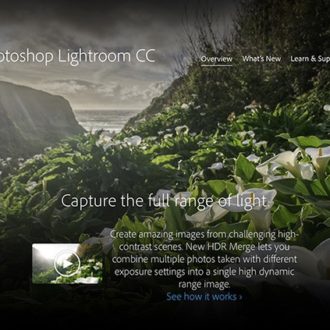Managing Adobe Cloud Storage Space for Classic Users
If you are like me, you are using the Lightroom CC app on your mobile device(s) in partnership with your Lightroom Classic catalog. I’ve been using these two apps this way since Lightroom Mobile (now called Lightroom CC for mobile) first came out and it works great as a vehicle for transferring photos captured with the mobile device to your computer, and as a way to make photos in your Classic catalog available for viewing/editing/sharing on your mobile device.
That said, since Lightroom Mobile was rebranded as Lightroom CC and what we knew as just “Lightroom” became Lightroom Classic things got a wee bit confusing (ok, very confusing).
I often get questions from Classic users who are trying to figure out how to manage the 20GB of storage space that comes with the Creative Cloud Photography plan (or 100GB if you have the full Creative Cloud subscription). The answer isn’t as clear cut as I think it could be, so bear with me as we dive into this.
Note, If you have the Lightroom CC only plan or you’ve paid for additional storage for the purpose of having originals stored in the cloud, then this post doesn’t really apply to you.
Background
Any photo that is captured with or imported into any of the Lightroom CC apps (Mac, Win, iOS, or Android) are uploaded at full resolution to the cloud. This is the beauty of the Lightroom CC ecosystem which means all your photos are stored in the cloud and accessible from any device.
Any photo that is synced to Lightroom CC from a Lightroom Classic catalog is only uploaded to the cloud as a smart preview (basically a compressed DNG version of the original resized to 2560 pixels on the long side). Because smart previews are used, photos synced from Lightroom Classic to Lightroom CC do NOT count against your Creative Cloud storage (check out my follow up post).

In Practice
So a typical workflow for me is to capture photos in the (very awesome) camera module within Lightroom CC on my phone while out and about. Those photos are eventually uploaded at full resolution to the cloud, and when I open my Classic catalog they are downloaded at full resolution to my laptop where they join all my other photos in permanent storage. Works great. Occasionally I also import photos from my DSLR into Lightroom CC using the camera connection kit while traveling, and those follow the same path as the photos captured in the camera module. That also works great. All of the full resolution photos uploaded to the cloud this way count against my Creative Cloud storage. Left unchecked I would rapidly hit my storage limit of 100GB.
The way to manage this is to remove the full resolution photos from being synced with Lightroom CC, which will remove them from the cloud and thereby free up storage space for more photos to pass through this workflow. Here’s what I do:
Step One: I have designated a single collection/album in Lightroom CC on my phone that functions as my Camera Roll. This becomes important later on for finding just those newly added photos.
Step Two: All photos captured or imported into Lightroom CC are only brought into that collection/album at first. This gives me a convenient place to find, view, and edit those photos until I have a chance to clean up my storage space.
Step Three: Open Lightroom Classic and let the sync process complete. This means that all of those newly captured or imported photos from Lightroom CC have fully downloaded to my computer and appear in the folder(s) I’ve designated for Lightroom CC files (Preferences > Lightroom Sync), and Lightroom Classic’s activity monitor no longer displays any messages about syncing files(you can also check Preferences > Lightroom Sync to see that no sync activity is happening).
I need to visually confirm they are all in their respective folders before doing anything else because photos that are removed from Lightroom CC before they download to Classic are gone forever.
Step Four: Expand the Catalog panel and click on All Synced Photographs (sorted by Capture Time with most recent on top). This view displays all of the photos synced between Lightroom Classic and Lightroom CC. Press G for Grid view if not there already.

Step Five: Select all the newly imported/created full resolution photos that downloaded from Lightroom CC and press Delete (I know this seems scary). You will see a popup dialog that says, “[N] photo(s) will be removed from all synced collections and from Lightroom CC, but will not be deleted from the desktop catalog.” In other words these photos will be deleted from cloud storage and removed from all synced collections, but they will remain in the Classic catalog and on your hard drive. This is why it is critical that you confirm all photos have fully downloaded to Classic first, and why I don’t bother putting those photos in any additional collections/albums until later (because I’d just have to add them back in). I recommend leaving the Don’t show again box unchecked, as this is a useful warning to have to prevent accidental removals.

Step Six: If I want any of those photos to be synced back to Lightroom CC for viewing, editing, etc. but as smart objects I simply drag and drop them from their respective folders in the Folders panel to the desired synced collections. This triggers Classic to create and upload a smart preview of those photos (along with any edits that have been applied at any point in the process). If I have a lot of photos spread across multiple folders I’ll add them to a regular un-synced collection before removing them from being synced as it makes it easier to find them again.
To Summarize
The whole point of this exercise is to manage the 20GB/100GB of cloud storage that comes with your CC subscription. Photos imported/created in a Lightroom CC app exist as full resolution copies in the cloud that count against your storage. Photos synced from Lightroom Classic to Lightroom CC only exist as smart previews in the cloud, and do not count against your storage.
I’m sure there are other ways to handle the management of that storage space, but hopefully my approach will help you understand the potential pitfalls as you carve out a solution that works for you. I’d love to hear how other people deal with this as I’m sure the whole system will continue to evolve over time.


